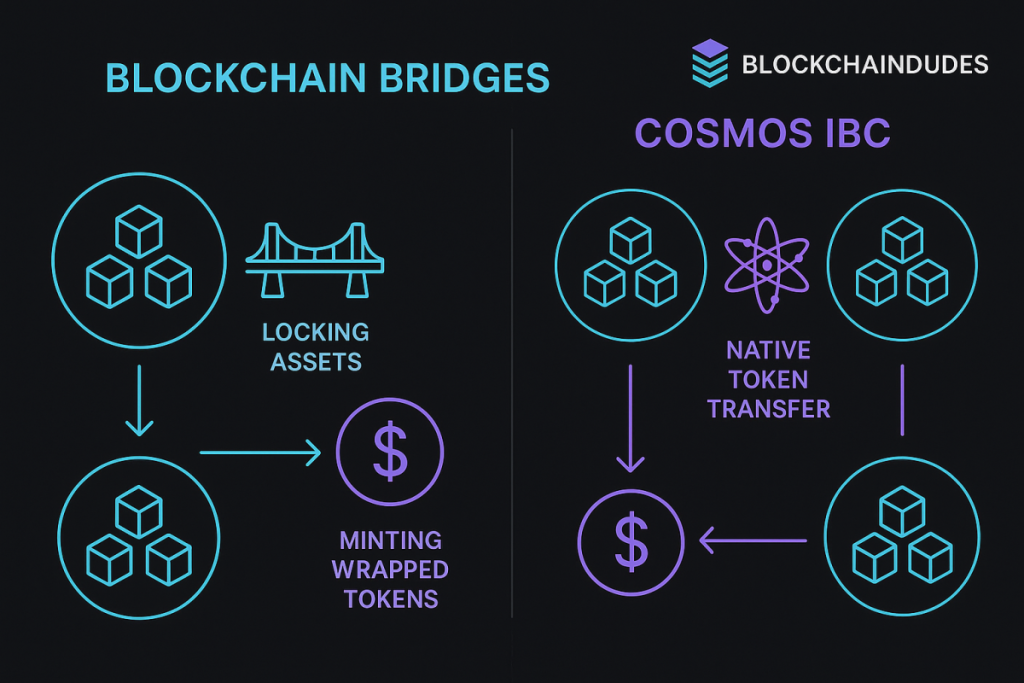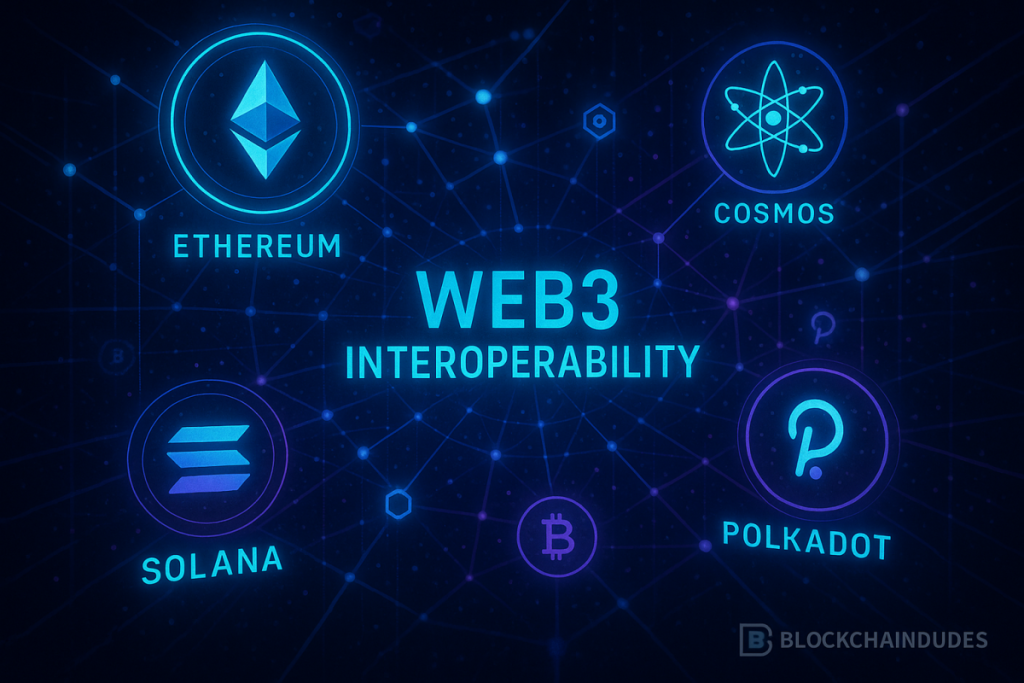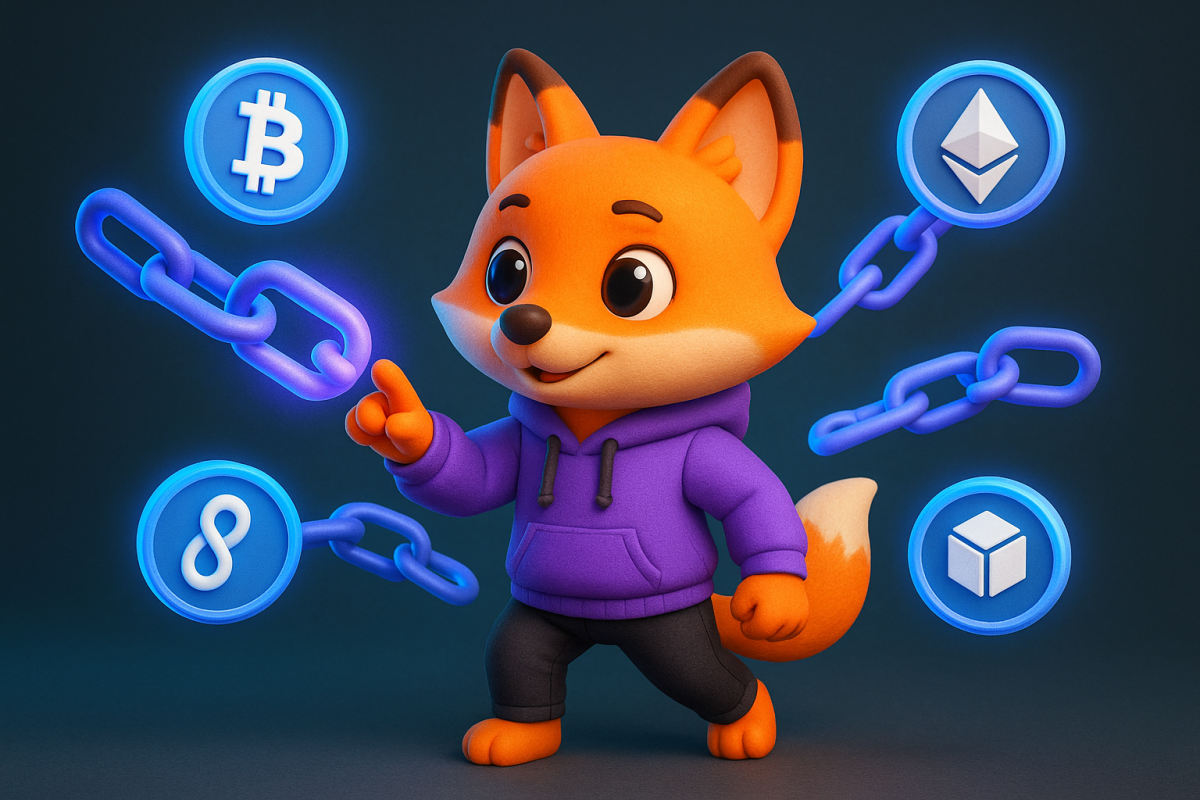Introduction
In the rapidly evolving world of decentralized technologies, Interoperability in Web3 is emerging as a foundational concept. As new blockchain ecosystems, decentralized applications (dApps), and digital assets continue to multiply, the importance of making these systems communicate with one another cannot be overstated. Without it, the promise of a decentralized, user-owned internet risks becoming a chaotic mess of incompatible protocols. But with Interoperability in Web3, we unlock a new era of frictionless blockchain utility.
What Is Web3 Interoperability?
Interoperability in Web3 refers to the seamless exchange of data, value, and functionality across multiple blockchain networks. It enables dApps, smart contracts, and user identities to move between chains without centralized intermediaries. The Interoperability in Web3 paradigm is critical for building a cohesive user experience.
Key Components of Web3 Interoperability:
- Cross-chain asset transfers: Move tokens and NFTs between blockchains.
- Shared liquidity: Access funds and yield opportunities across different DeFi platforms.
- Unified identity: Use a single wallet or decentralized identity across multiple dApps.
- Composable applications: Smart contracts on one chain triggering functions on another.
In simple terms, it’s the glue that binds the decentralized internet into a cohesive user experience.
Want more crypto knowledge? Join our newsletter for weekly insights, free guides, and tools.
Want more crypto knowledge? Subscribe to our newsletter to unlock 70+ free guides, tutorials, and insider tools on blockchain and Web3.
Why Web3 Interoperability Is Essential
Without interoperability, blockchain networks are isolated silos. Here’s why that’s a problem:
1. Enhanced Usability
Furthermore, Interoperability in Web3 is essential for bridging the gap between various blockchain technologies, ensuring that users can navigate the decentralized landscape with ease.
Imagine needing separate wallets and tokens for every chain you interact with. Interoperability simplifies the user experience and accelerates mainstream adoption.
The role of Interoperability in Web3 cannot be underestimated as it allows for enhanced collaboration across different platforms, ultimately benefiting all users involved.
This isolation is exactly why Interoperability in Web3 is vital. It fosters an ecosystem where blockchain networks can work together, sharing data and resources seamlessly.
2. Capital Efficiency
The significance of Interoperability in Web3 extends beyond technical challenges; it directly impacts user experience and adoption rates.
Understanding Interoperability in Web3
By embracing Interoperability in Web3, developers can create applications that utilize the strengths of multiple blockchains, enhancing overall functionality.
Liquidity locked on one chain cannot benefit users on another. Interoperability unlocks this capital and allows it to flow freely to wherever it is most productive. This is especially relevant for those looking to earn crypto through multichain DeFi strategies, NFT marketplaces, and staking solutions.
3. Innovation and Development
Developers can combine primitives from multiple ecosystems—e.g., Ethereum smart contracts with Cosmos data feeds—to build powerful dApps that wouldn’t be possible on a single chain.
4. Security and Resilience
The challenges of security in Interoperability in Web3 must be addressed to ensure user trust and platform integrity across various networks.
Interoperability can allow blockchains to share security resources such as rollups, fraud proofs, and relayers, increasing the overall resilience of the Web3 ecosystem.
Maintaining decentralization while achieving Interoperability in Web3 requires innovative solutions that prioritize user autonomy and data security.
5. Decentralization at Scale
To fully realize the vision of Interoperability in Web3, various interoperability solutions must be adopted collaboratively across the entire ecosystem.
Interoperable systems avoid centralization by connecting independent blockchains in a decentralized mesh, rather than relying on monopolistic platforms.
Investing in Interoperability in Web3 technologies will pave the way for future advancements and integrations within the blockchain space.
Projects that prioritize Interoperability in Web3 are setting themselves up for success in a competitive and rapidly changing digital landscape.
As the industry evolves, the importance of Interoperability in Web3 will only continue to grow, shaping the future of decentralized technology.
Understanding the nuances of Interoperability in Web3 allows developers to create more effective and user-friendly applications.
Main Interoperability Solutions in Web3
There is no one-size-fits-all solution. Different approaches have emerged to meet different needs.
Cross-Chain Bridges
These platforms lock assets on one chain and mint or release them on another.
Pros: Simple to implement and use.
Cons: Vulnerable to smart contract bugs and validator collusion.
Relay Chains and Hub Architectures
Projects like Polkadot use a relay chain model where parachains plug into a central hub for shared security and messaging.
Pros: Native interoperability and high security.
Cons: Requires parachains to conform to the ecosystem.
Atomic Swaps and HTLCs
Atomic swaps use Hash Time-Locked Contracts to perform cross-chain trades without middlemen.
Pros: Trustless and decentralized.
Cons: Limited functionality and not suitable for smart contracts.
Interchain Messaging Protocols
Cosmos IBC, LayerZero, and Hyperlane are examples. These allow smart contracts and applications to communicate across chains, not just swap assets.
Pros: Enables rich, composable interactions.
Cons: Requires widespread adoption and technical integration.
Sidechains and Pegged Chains
Assets move between main chains and sidechains through pegging mechanisms.
Pros: Reduces mainnet congestion.
Cons: Depends on the integrity of sidechain validators.
Interoperability in Web3 also plays a crucial role in enhancing the security and resilience of blockchain ecosystems through shared resources.
With the rise of Interoperability in Web3, users can benefit from a more integrated and efficient blockchain experience.

Real-World Examples of Interoperability
Cosmos and IBC
The future of Interoperability in Web3 hinges on our ability to overcome existing challenges and embrace innovative solutions.
Cosmos promotes an “Internet of Blockchains” with IBC at its core.
- Example: Token transfers between Osmosis and Cosmos Hub
- Use cases: Shared liquidity pools, multichain DeFi strategies
Polkadot Ecosystem
Each parachain serves a specific purpose but communicates through the relay chain.
- Example: Moonbeam handling smart contracts, Acala managing DeFi
- Use cases: Cross-parachain governance, token transfers
Ethereum Layer 2s
Rollups like Optimism and zkSync connect back to Ethereum via bridges.
- Use cases: Cheap DeFi transactions, NFTs, and governance on L2 while retaining L1 security
Multichain Bridges
As we move forward, Interoperability in Web3 will remain at the forefront of discussions regarding the future of decentralized applications.
Projects like Wormhole and LayerZero support Ethereum, Solana, Avalanche, and more.
- Use cases: Cross-chain swaps, omnichain NFTs, yield farming on multiple networks
Why Web3 Interoperability Matters for the Future
Interoperability is not just about DeFi or smart contracts. It’s critical for many future applications of blockchain.
Metaverse and Gaming
Imagine earning a sword NFT in one game and using it in another—across blockchains.
Ultimately, the success of enterprises leveraging Interoperability in Web3 will depend on their ability to adapt and innovate within a rapidly changing environment.
Decentralized Identity
One DID can log you into hundreds of dApps and platforms.
Stablecoin Liquidity
USDT and USDC can move where needed most—faster, cheaper, and without borders.
Enterprise and Regulatory Use
Cross-border settlements, CBDCs, and institutional DeFi all require seamless multi-chain flows.
Challenges and Risks of Blockchain Interoperability
While the benefits are many, interoperability comes with serious trade-offs.
Security
Bridges and cross-chain protocols are among the most frequently targeted by hackers. Misconfigured multisigs, smart contract bugs, or validator corruption can lead to huge losses.
Scalability
Interoperability increases traffic and data flow. Without robust architecture, this can congest networks and inflate gas fees.
Governance
Who sets the rules for interoperability standards? Cross-chain governance introduces political and technical challenges that Web3 is still figuring out.
User Experience
Even with cross-chain functionality, users often face clunky interfaces, multiple wallet connections, and complex fee management.
Future Trends in Web3 Interoperability
Web3 builders are rapidly working to solve the remaining barriers. Key trends to watch:
Standardization
ERC-4337 (account abstraction), PSP-22 (Polkadot token standard), and DID schemas aim to create shared languages for Web3.
Zero-Knowledge Light Clients
ZK-proofs enable one blockchain to verify the state of another without trusting centralized relayers.
Smart Wallets
New wallets auto-manage bridging, gas fees, and signatures across chains—removing friction for users.
Layer 3 and Modular Stacks
Composability at a higher level, allowing developers to build chain-agnostic apps with shared APIs.
Decentralized Relayer Networks
Protocols like Hyperlane and Axelar provide secure, permissionless cross-chain messaging and coordination.

How To Engage With Web3 Interoperability
For Developers
Build dApps that treat chains as abstract layers. Use APIs that route to the best available execution layer, integrate with IBC, or leverage bridges like LayerZero.
By prioritizing Interoperability in Web3, the decentralized internet can become a reality, fostering a more connected global community.
As we embark on this journey, Interoperability in Web3 will be the cornerstone of our efforts to create a seamless blockchain experience.
For Users
Only by embracing Interoperability in Web3 can we unlock the full potential of decentralized technologies for all users.
In conclusion, Interoperability in Web3 is essential for the future of digital interactions, making it a critical focus for developers and users alike.
Adopt interoperable wallets (e.g., MetaMask with bridge plugins, Keplr for Cosmos). Use multichain DeFi protocols and stay updated on bridge security.
For Institutions
Build cross-chain strategies for treasury management, liquidity deployment, and compliance. Evaluate bridges and interoperability providers based on audits and uptime.
Ledger is the gold standard for hardware crypto wallets. Store your coins offline, safely.
Conclusion
Web3 interoperability is not a bonus feature—it is the foundation of a scalable, user-friendly, and composable decentralized internet. As blockchain ecosystems continue to expand, only those that can communicate, cooperate, and interconnect will survive and thrive.
Whether it’s moving an NFT between chains, using your wallet seamlessly across dozens of dApps, or creating a global DeFi strategy, interoperability is what will make Web3 practical and profitable.
If you value ad-free, independent content like this, please consider supporting us with a donation to help us continue educating the Web3 community.
Ready to unlock the true potential of Web3?
Start building or using tools that embrace interoperability—because the future isn’t built on one blockchain. It’s built on all of them, working together.
What is the difference between bridges and IBC?
Bridges typically lock tokens on one chain and mint wrapped versions on another—often using centralized or semi-centralized custody. IBC (Inter-Blockchain Communication), used in Cosmos, enables native, trust-minimized token and data transfers across independent blockchains.
Are cross-chain hacks common?
Yes. Since 2021, over $2 billion has been stolen from bridges. The risk depends on the bridge’s architecture: multi-sig setups, lack of audits, and centralized relayers increase vulnerability.
How do I choose an interoperable wallet?
Choose a wallet that natively supports multiple chains.
For EVM chains: MetaMask
For Cosmos: Keplr or Cosmostation
For cross-chain UX: Smart wallets that auto-swap gas tokens and integrate bridge support
Will Web3 be fully interoperable soon?
We’re getting close. True universal interoperability may take 2–3 more years to standardize. But today, apps already operate across Ethereum, Cosmos, Solana, Avalanche, and more.
Guess what? When you click and buy via our links, you’re not just enhancing your experience—you‘re also supporting our content creation for free, so we can keep sharing useful blockchain insights. It‘s a pump for both of us!
— Andre






